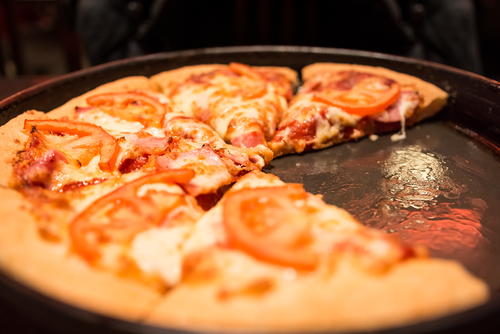Short answer
Pizza Hut is bad for you when consumed excessively. An occasional indulgence is not harmful.
Long answer
Pizza is one of America’s favorite foods, with over 3 billion pizzas sold per year. Pizza delivery chains like Pizza Hut make huge profits off of our beloved indulgent food. Although delicious, pizza can easily destroy your healthy diet, due to high calories and high sodium content. Just one piece of cheese pizza can set you back significantly.
A quick glance at Pizza Hut’s nutrition facts shows that one large piece of hand-tossed cheese pizza equals 290 calories, 11 grams of fat, and 640 milligrams of sodium. Based on the average 2,000 calorie a day diet, Pizza Hut fails at providing the consumer with healthy food.
When focusing on calories alone, one slice of cheese pizza is roughly 15% of your daily recommended caloric intake. In addition, the average adult only needs about 44 to 78 grams of fat per day, and one slice accounts for 14% to 23% of that daily value. The Dietary Guidelines for Americans recommend no more than 2,300 milligrams of sodium per day, and one slice of pizza would take up almost 28% of that value.
These nutrition facts show that Pizza Hut has a significant impact, especially when it comes to sodium intake. Studies show that a diet high in calories, fat (especially saturated and trans-fats), and sodium can lead to conditions such as high blood pressure, heart disease, and obesity. Based on these numbers, eating anywhere from three to four slices in one meal exceeds every daily-recommended amount. These nutrition values only increase as you add more toppings on your slice. To compare, just one slice of Pizza Hut’s Primo Meats-Large Pan pizza includes a whopping 450 calories, 26 grams of fat, and 1,020 milligrams of sodium.
The presence of gluten in food has become a topic of discussion in recent years, as a result of the “mass food production revolution”. Gluten is linked to an immune-mediated illness known as celiac disease. This disease affects the way the gut absorbs and processes food. Aside from celiac, there are potential gluten sensitivities that may include irritable bowel syndrome (IBS), fibromyalgia, and psychiatric disorders. Pizza Hut offers a crust that is gluten-free and has the following comments regarding the “gluten-free” options on their website:
“Our Gluten-Free Pizza is made using a preparation process approved by The Gluten Intolerance Group (GIG). Please inform a manager if you have a gluten intolerance when you place your order. You can add other toppings on our Gluten-Free crust, but only the preparation process for the cheese only, and cheese and pepperoni pizzas are GIG certified. Our normal kitchen operations involve shared cooking and preparation areas, so you should consider your individual dietary needs when placing your order, including whether you want to add additional toppings.”
It is important to treat Pizza Hut as a rare indulgence in your diet. When consuming pizza, it is helpful to stick to one or two slices, include minimal toppings-- and stay away from extra meat and cheese options. Although pizza can provide important nutrients like calcium, lycopene (found in tomato sauce), and vitamins from vegetable toppings, the additional calorie, fat, and sodium content poses a real threat.
To maximize your health benefits from pizza consider making your own at home where you have total control over the fat and sodium levels. Choose healthy options such as whole grain dough, homemade pizza sauce-- that has been blended with fresh herbs and spices, and fresh, organic vegetable toppings. Although Pizza Hut is not the best option nutritionally, pizza itself has the opportunity to be healthy depending on how you make it.
Possible short-term side effects
- bloating
- headache
- swelling (from high sodium content)
- dehydration (from high sodium content)
Possible long-term side effects
- heart disease
- high blood pressure
- irritable bowel syndrome
- obesity
Ingredients to be aware of
- excess toppings (especially meat toppings)
- excessive sodium
- saturated fat
- hydrogenated oils

Healthier alternatives
- homemade pizza with whole wheat dough
- mini “pizza” on english muffins
- mushroom cap pizza
- pizza on veggie crust
- pita bread pizza
- pizza toppings on eggplant slices
 Approved by
Approved by 















